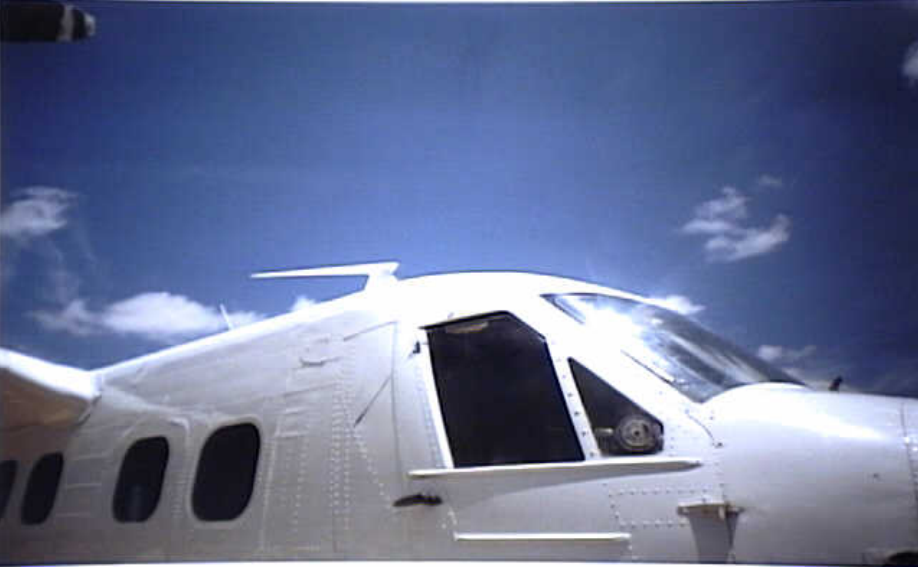
This information is added by users of ASN. Neither ASN nor the Flight Safety Foundation are responsible for the completeness or correctness of this information.
If you feel this information is incomplete or incorrect, you can submit corrected information.
| Date: | Sunday 27 May 2001 |
| Time: | 11:20 |
| Type: |  de Havilland Canada DHC-6 Twin Otter |
| Owner/operator: | Sky Dive San Marcos |
| Registration: | N125PM |
| MSN: | 89 |
| Year of manufacture: | 1967 |
| Engine model: | P&W Canada PT6A-27 |
| Fatalities: | Fatalities: 0 / Occupants: 22 |
| Other fatalities: | 1 |
| Aircraft damage: | Minor |
| Category: | Accident |
| Location: | Fentress, TX -
 United States of America United States of America
|
| Phase: | Manoeuvring (airshow, firefighting, ag.ops.) |
| Nature: | Parachuting |
| Departure airport: | Fentress, TX |
| Fentress, TX | |
| Investigating agency: | NTSB |
| Confidence Rating: |
On May 27, 2001, at 1120 central daylight time, a de Havilland DHC-6 Twin Otter, N125PM, came in contact with a skydiver, who had exited a Beech King Air 90, multi-engine airplane, N276VM, during a formation air drop near Fentress, Texas. The skydiver received fatal injuries. The commercial pilot of the de Havilland was not injured, and the 21 skydivers that exited the de Havilland were not injured. The commercial pilot of the King Air was not injured, and the other 8 skydivers that exited the King Air were not injured. The de Havilland sustained minor damage, and the King Air was not damaged. Each aircraft was owned by a different individual and both were operated by Sky Dive San Marcos, Fentress, Texas, under 14 Code of Federal Regulations Part 91. Visual meteorological conditions prevailed, and a flight plan was not filed for the local flight. Both aircraft departed the private airstrip at Fentress, Texas, approximately 20 minutes prior to the accident.
A de Havilland DHC-6 and a Beech King Air 90 were to make a formation air drop of skydivers from 14,000 feet msl. The de Havilland was to be the lead aircraft with the King Air in trail. As the skydivers prepared to exit, the King Air was traveling faster than the de Havilland, and the pilot of the King Air had to pitch up and bank right to avoid the de Havilland. At that time, the pilot of the King Air lost sight of the de Havilland. A video tape taken by one of the skydivers showed that at the time the skydivers exited, the King Air was above, right, and ahead of the de Havilland. One of the King Air skydivers contacted the right propeller of the de Havilland. Other skydivers then saw this skydiver spinning out of control. One of these skydivers caught the injured skydiver and pulled the reserve handle; however, the reserve parachute did not fully inflate "due to being cut by the propeller." The injured skydiver fell to the ground. Both airplanes landed without further incident. The operator reported that this was the first formation air drop flight for either pilot in a multi-engine aircraft.
Probable Cause: The King Air pilot's inadequate in-flight planning/decision in that he failed to remain in the agreed on formation position, resulting in one of his skydiver's contacting the propeller of the de Havilland airplane. A contributing factor was the lack of total experience of both pilots in multiengine formation air drop flights.
Accident investigation:
 |
|
Sources:
NTSB
http://twinotterarchive.com/DHC-6_89.html
Images:


Photos: NTSB
Revision history:
| Date/time | Contributor | Updates |
|---|
Corrections or additions? ... Edit this accident description
The Aviation Safety Network is an exclusive service provided by:


 ©2024 Flight Safety Foundation
©2024 Flight Safety Foundation